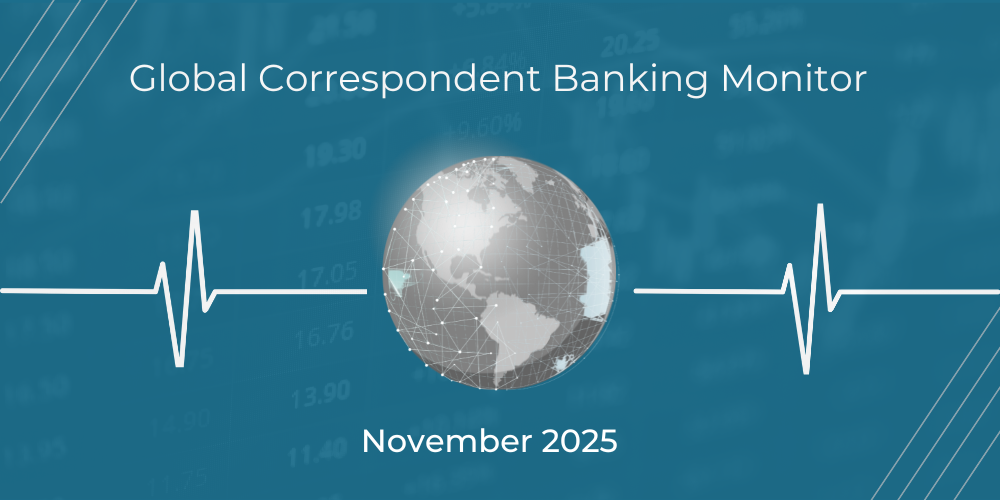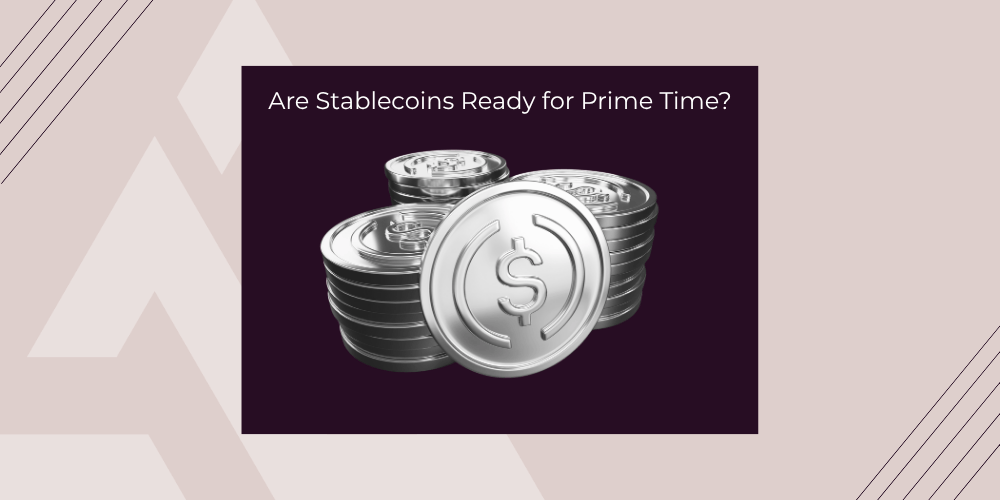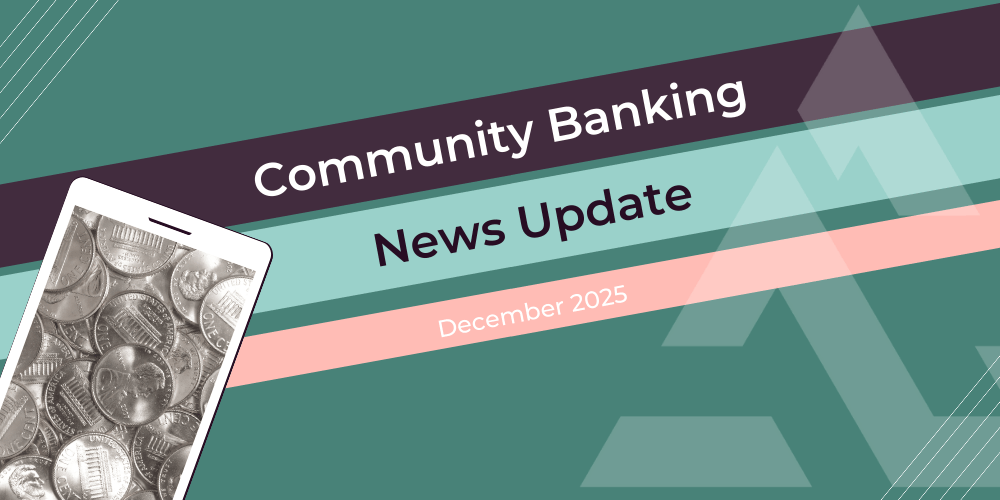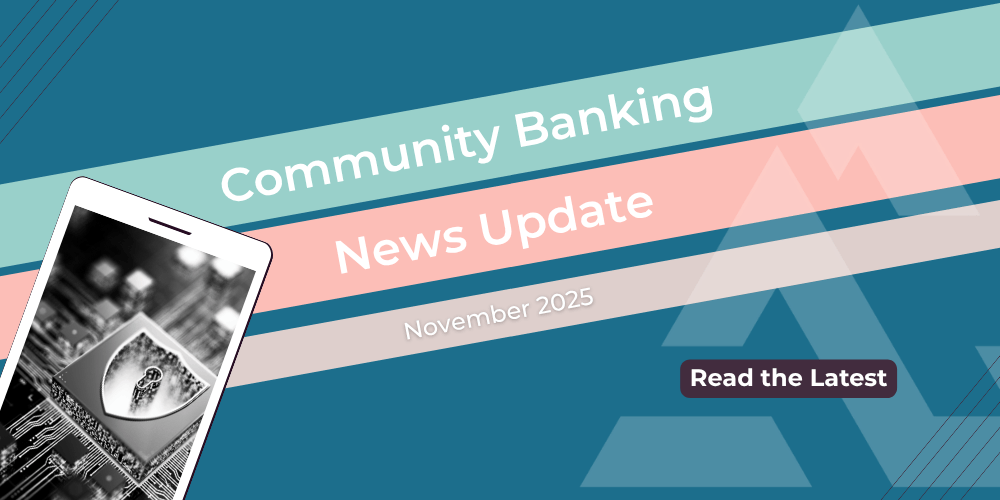SWIFT’s blockchain ledger, stablecoins, CBDCs, international payment automation, and other changes shaping correspondent banking.
Technological advances are driving significant shifts and causing ripples in cross-border payments and correspondent banking globally. SWIFT is adding a blockchain-based ledger and setting new rules for retail cross-border transactions. The ISO 20022 deadline for international payments is here as banks look for ways to monetize richer data. Zelle and Visa integrate stablecoins, and China and Europe are developing CBDCs. Here’s a look at the latest developments.
1. SWIFT to Add Blockchain-Based Shared Ledger to Its Infrastructure Stack for 24/7 Cross-Border Payments
SWIFT announced that it will add a blockchain-based shared ledger into its global payments infrastructure to enable real-time cross-border payments, expanding its traditional role as a messaging network into a digital environment.
This common ledger is designed to support regulated tokenised value transfers (including stablecoins and tokenised deposits), enable transactions 24 hours a day / 7 days a week, and offer higher speed, transparency, and interoperability with future-digital-assets rails, while preserving SWIFT’s compliance and security standards.
SWIFT is building the ledger in collaboration with over 30 financial institutions across 16 countries and blockchain firm ConsenSys. This is an infrastructure play; SWIFT will not itself issue tokens, but will offer a trusted global ledger where banks and other regulated entities can transact tokenised value.
Impact on Correspondent Banking
For community banks and smaller financial institutions, SWIFT’s shared ledger signals a meaningful modernization of the global payments backbone. Faster settlement, continuous availability, and improved transparency could make cross-border payments more efficient and cost-effective for banks traditionally reliant on multiple intermediaries.
At the same time, the move reinforces the need for readiness. Community FIs will need to ensure their systems can support richer data exchange and potential tokenized settlement. Those who prepare early can gain access to new corridors, efficiencies, and potential non-interest income.
Read more about how community financial institutions can prepare for the stablecoin era:
2. SWIFT Sets New Rules for Retail Cross-Border Payments to Boost Speed and Predictability
SWIFT also announced an overhaul of its network rules for retail cross-border payments, aiming to make international money transfers faster, cheaper, and more predictable for consumers and small businesses. Under the new framework, participating banks will be required to process retail payments within 10 minutes, provide real-time tracking through the SWIFT system, and disclose upfront all fees and foreign exchange rates.
The rules are designed to set a new industry benchmark for transparency and reliability in low-value international transactions, an area long dominated by fintechs and remittance firms. SWIFT’s initiative aligns with G20 targets to enhance cross-border payments efficiency by 2027.
Impact on Correspondent Banking
For community banks, SWIFT’s new retail payments rules could help level the playing field with fintechs by enabling faster, more transparent international payments. Customers will expect real-time status updates and clear fee disclosures, which are features once limited to large banks and digital payment apps.
To stay competitive, community banks will need to ensure their systems can support these enhancements, likely through core integrations or partnerships with correspondent banking technology providers. The shift also presents an opportunity to monetize retail cross-border flows more effectively, capturing non-interest income while delivering a modern customer experience that rivals fintech.
Learn more about correspondent banking automation technology:
3. ISO 20022 Migration Enters Next Phase: Structured Addresses and Monetization
The coexistence period for SWIFT MT messages officially ends on November 22, 2025, marking the full transition to ISO 20022 for cross-border and interbank payments. After this date, institutions must send and receive all messages in ISO 20022 format, completing a multi-year migration. The standard enables richer data, faster reconciliation, and improved compliance, while the focus is now shifting from implementation to value creation.
With most institutions technically live, the next challenge is how to monetize ISO 20022 data through smarter analytics. At the same time, the migration to structured addresses begins, according to Finextra, which will require banks to add new data management efforts in the next year, as they capture and process new and existing customer data in a structured or hybrid-address format.
Impact on Correspondent Banking
For community banks, ISO 20022 compliance is only phase one. Structured data fields open opportunities to automate manual workflows and strengthen AML accuracy, but they also demand cleaner data and upgraded systems.
The next advantage will go to institutions that use ISO 20022 not just for compliance, but for monetization, by analyzing the enriched data to improve customer insights, and introduce new products. Acceleron’s ISO 20022 Guide explores how banks can turn structured data into new sources of non-interest income and operational efficiency.
4. Zelle and Visa Bet on Stablecoins to Power Faster Cross-Border Payments
Two of the world’s largest payment networks are embracing stablecoins to modernize international money movement. Early Warning Services, the operator of Zelle, announced it will expand internationally and integrate stablecoins to support instant, low-cost cross-border payments. The initiative aims to extend Zelle’s extensive domestic network globally, allowing participating banks and credit unions to settle transactions in real time using blockchain infrastructure while maintaining regulatory compliance.
In parallel, Visa announced a pilot enabling businesses to fund cross-border payments by using pre-funded stablecoins instead of holding large fiat balances in foreign accounts, aiming to unlock liquidity and reduce settlement times.
Impact on Correspondent Banking
Stablecoins are moving from fintech experiment to mainstream payments infrastructure. For community banks, the adoption of stablecoin rails by Visa and Zelle underscores the urgency of understanding how tokenized settlement will reshape cross-border liquidity and fee structures.
These developments could level the playing field by giving smaller banks access to real-time settlement and lower costs if they connect through compliant intermediaries or correspondent partners offering stablecoin-based settlement. Institutions that wait too long to explore participation risk losing cross-border customers to fintechs or larger banks that can offer faster, cheaper, and always-on international payments.
Read our latest article on stablecoin from a regulatory lawyer’s perspective:
5. CBDCs Gain Momentum: Shanghai Launches Digital Yuan Center as Europe Prepares Digital Euro Pilot
Shanghai has launched a Digital Yuan Innovation Center to advance the development of China’s central bank digital currency (CBDC), the e-CNY, with a focus on cross-border applications and integration into trade finance. The center will oversee blockchain services and digital asset platforms.The move underscores China’s plan to internationalize the yuan and reduce its dependence on the US dollar.
Meanwhile, the European Central Bank announced plans to launch a digital euro pilot in 2027, following the completion of its preparation phase next year. The ECB aims to offer a secure, privacy-protected, and interoperable form of digital cash, ensuring that central bank money remains available in an increasingly digital economy.
This comes as the U.S. House of Representatives is proposing a ban on central bank digital currencies., called the Anti-CBDV Surveillance State Act, that would block the Federal Reserve from creating or distributing a digital dollar.
Impact on Correspondent Banking
Central bank digital currencies are moving from theory to implementation, signaling the next frontier in global payments infrastructure. While their initial use will be domestic, the eventual cross-border interoperability of digital yuan and euro systems could reshape international settlement flows, with the potential to reduce reliance on correspondent networks and changing FX dynamics.
For community banks, these moves highlight the need to stay informed on digital currency infrastructure and compliance frameworks. CBDCs could ultimately drive new standards for transparency, speed, and programmable settlement, themes already influencing U.S. modernization efforts such as ISO 20022 and real-time payment adoption.
In case you missed it:
The last issue covered new cross-border payment partnerships, including Acceleron and Braid, Mastercard and Zand, and Payoneer and Stripe. (Catch up here.)
Acceleron is a modern correspondent banking technology platform that empowers community banks and credit unions to automate international wire transfers, capture non-interest income, and compete more effectively with big banks. With a foreign exchange (FX) marketplace and currency conversion engine, Acceleron’s API-first infrastructure helps institutions turn cross-border payment flows into efficient, revenue-generating opportunities. Serving over 200 financial institutions and facilitating more than $1 billion in international payments annually, our correspondent banking services and international payment automation solutions are pre-integrated seamlessly with Fiserv Payments Exchange, Aptys, Braid, and other leading payments platforms.
Subscribe to our monthly newsletter, "The Exchange," to stay in the know and get original content and insights you won't find anywhere else!
 Daisy Lin, Head of Marketing, Acceleron
Daisy Lin, Head of Marketing, Acceleron


-1.png)
.png)



